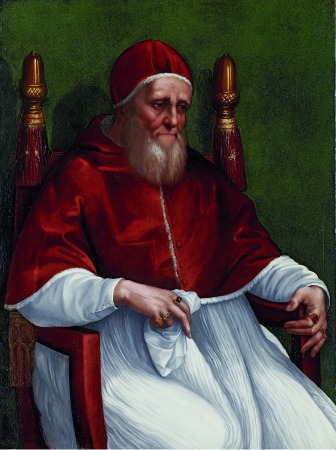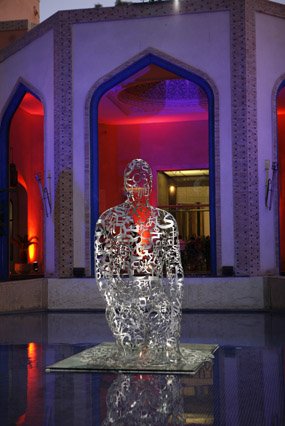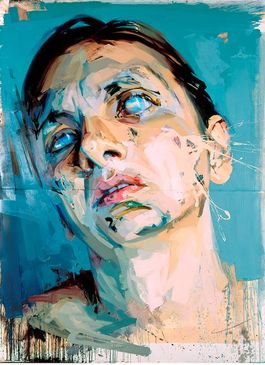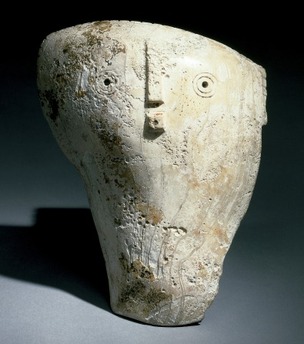The Staedel Museum in Frankfurt just announced a big catch: it has purchased a famed image of Pope Julius II by Raphael and his workshop, a “new” picture, but one known by two other versions in renowned collections — the National Portrait Gallery in London and the Uffizi in Florence. It is one of Raphael’s most famous images.
 The Staedel’s version has been out of public view, though in its announcement the Staedel traced ownership back to 1905 — that is when it was auctioned at the Hôtel Drouot in Paris, part of the Bercioux collection.
The Staedel’s version has been out of public view, though in its announcement the Staedel traced ownership back to 1905 — that is when it was auctioned at the Hôtel Drouot in Paris, part of the Bercioux collection.
A private collector purchased the painting and, the Staedel says, “it then made its way from Paris to New York by 1909, and returned to Europe in 1914. In 2007, following further changes of ownership, it was auctioned at the Dorotheum in Vienna as a work by an imitator of Raphael. There it was purchased by the private Ellermann collection, from which the Städel had the fortune of purchasing it at a price substantially below market value thanks to the good will of the seller. The conjectured provenance of the painting before this thread is taken up in 1905 leads back to the family of Julius II himself.”
Of course, no one knows for sure, but the Staedel says it will research the pre-1905 provenance in time for an exhibition titled “Raphael and the Portrait of Julius II: Pictorial Propaganda of a Renaissance Pope” scheduled for November 2012 to February 2013.
Frankly, I’d like to know who owned the work in New York, too, and gave it up…
The exhibit will also compare the Staedel portrait with the more well-known ones in London and Florence.
In the meantime, the Staedel plans to unveil its new treasure in its new Old Master galleries, which are set to open on Dec. 15 after a 14-month refurbishment.
Read more in the press release.
This is a boon to those galleries, which recently “lost” a wonderful Holbein that had been on loan to those Old Master galleries from the Hesse family. They sold it to billionaire Reinhold Wuerth.
UPDATE: Just ask, and the Staedel answers. In response to my wondering about the picture’s presence in New York, the press office sent this New York Times article:
1910 NYTimes Claims to have found a rare Raphael here 15 Mai 1910.pdf
1910 NYTimes-Artikel Arthur Dawson Thinks.pdf
Photo Credit: Courtesy of the Staedel Museum

 The male-female divide isn’t the only one that affects an artist’s success. It also matters where you live. If it’s a small country in terms of population, it’s hard to get attention beyond your borders. Think about it.
The male-female divide isn’t the only one that affects an artist’s success. It also matters where you live. If it’s a small country in terms of population, it’s hard to get attention beyond your borders. Think about it. 
